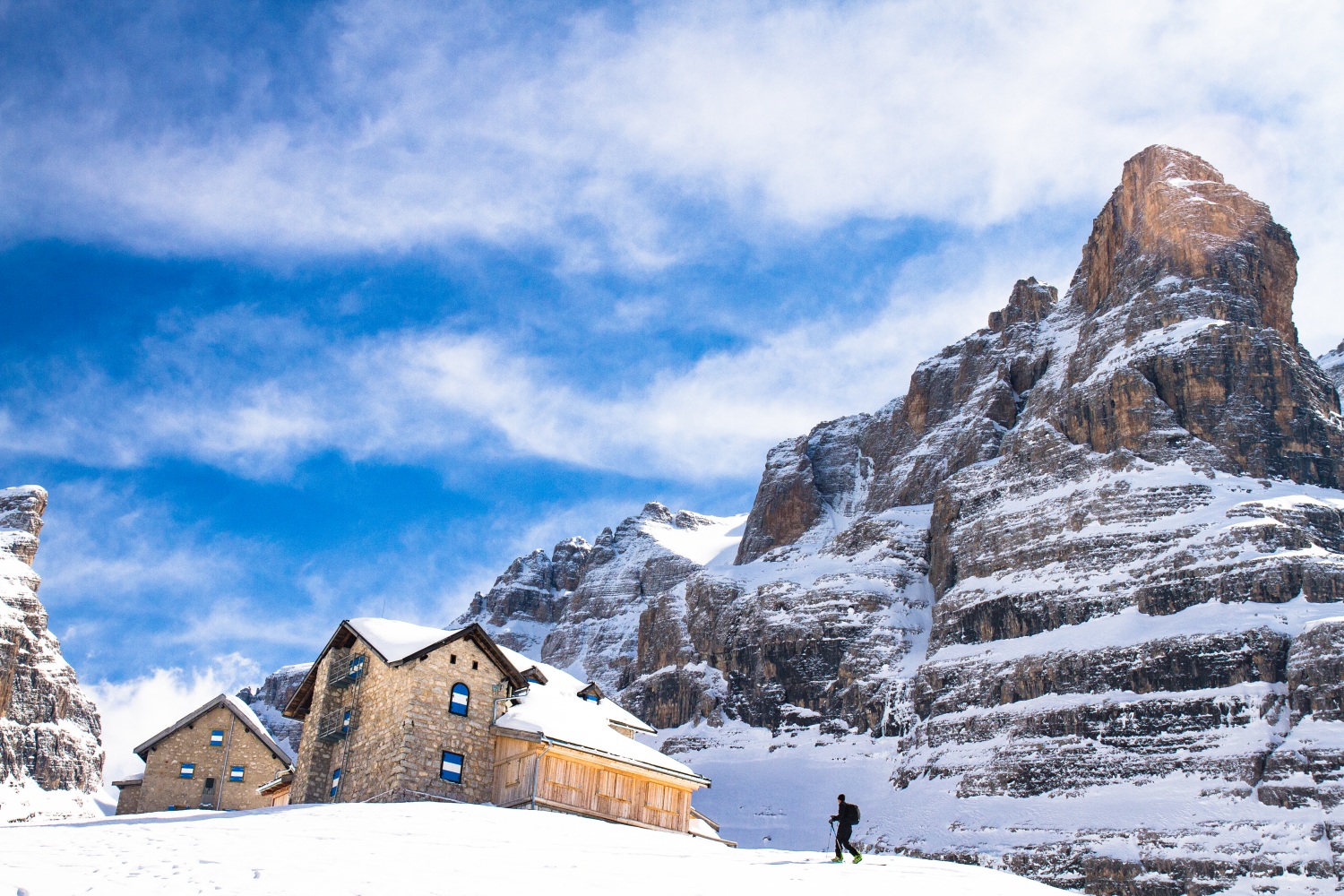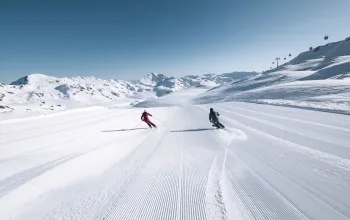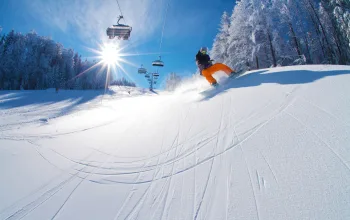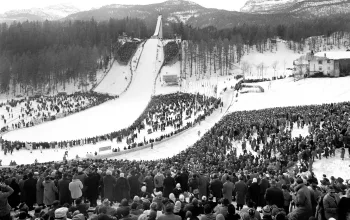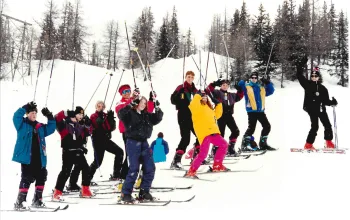The first rule of packing for a multi-day ski touring mission in Italy is establishing how many bottles of wine you can carry between you. The second most important consideration is how much pasta you can fit around the wine. Only after that do things like splitboard crampons, ice axes, or spare socks get a look in.
The weather – it’s late March, and hot – makes some decisions easy. The ice axe can safely be left in the car, says Simone Elmi, our guide, but spare, non-stinky baselayers to change into will be essential. I quickly learn that being able to fit stuff into a backpack, and being able to carry that backpack up the hill are two very different things.
Two weeks of warm temperatures has sent the snowline retreating up to 1,400m. This leaves us with about four hundred vertical metres of very sweaty hiking – with boards and skis added to the weight of our packs – before we can start touring properly. Still, I count myself lucky to be anywhere near the snow at all.
Winter 2021 was a complete write-off for most British snowsports enthusiasts. I was just fortunate that my Italian girlfriend and I had decided to move from Dublin to the Dolomites in December – shortly before the Irish and UK governments imposed their longest lockdowns yet. Needless to say, our first season living in the ski resort of Fai della Paganella didn’t pan out quite as we’d imagined.
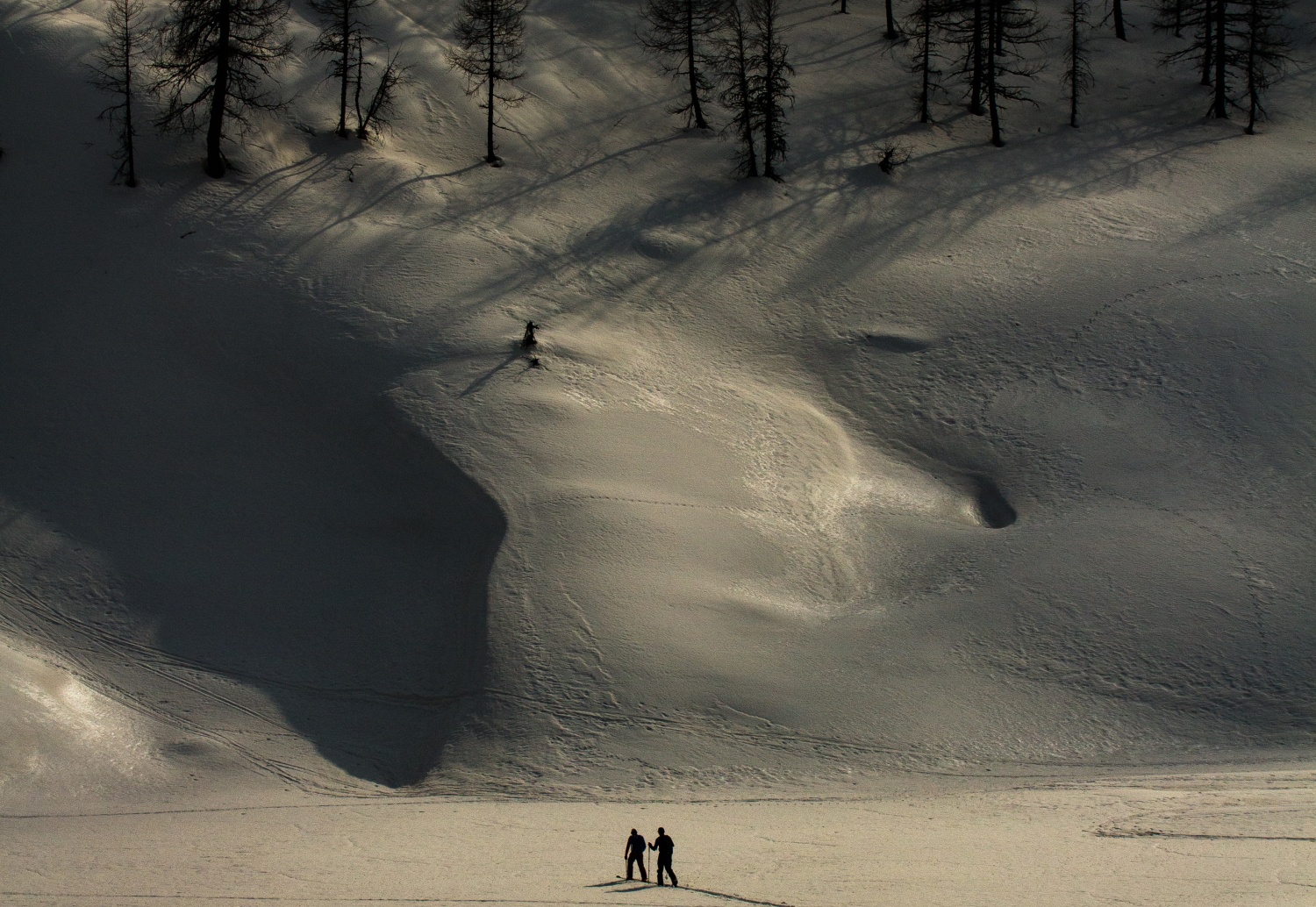
The Italian authorities spent the season uhmming and erring before finally deciding not to let any lifts open. But the snow kept falling regardless, and in the end, our local ski area enjoyed one of its best snow seasons in decades.
In a normal winter, the mountain range we’re heading into, known as the Brenta Dolomites, wouldn’t exactly be busy, Simone explains, but you’d expect to see a few other skiers. In the foothills opposite our entry point, several lifts snake up from Madonna di Campiglio, a major resort which welcomes over 150,000 guests each season.
The Brenta are busier still in the summer, when mountain refuges open, and well-marked trails lead hikers up towards their jagged, 3,000m plus peaks. This season, however, a ban on travel between Italy’s different regions means even the trickle of visiting ski tourers has disappeared. These mountains are probably as empty as at any time since climbers first summited their peaks in the mid-19th Century.
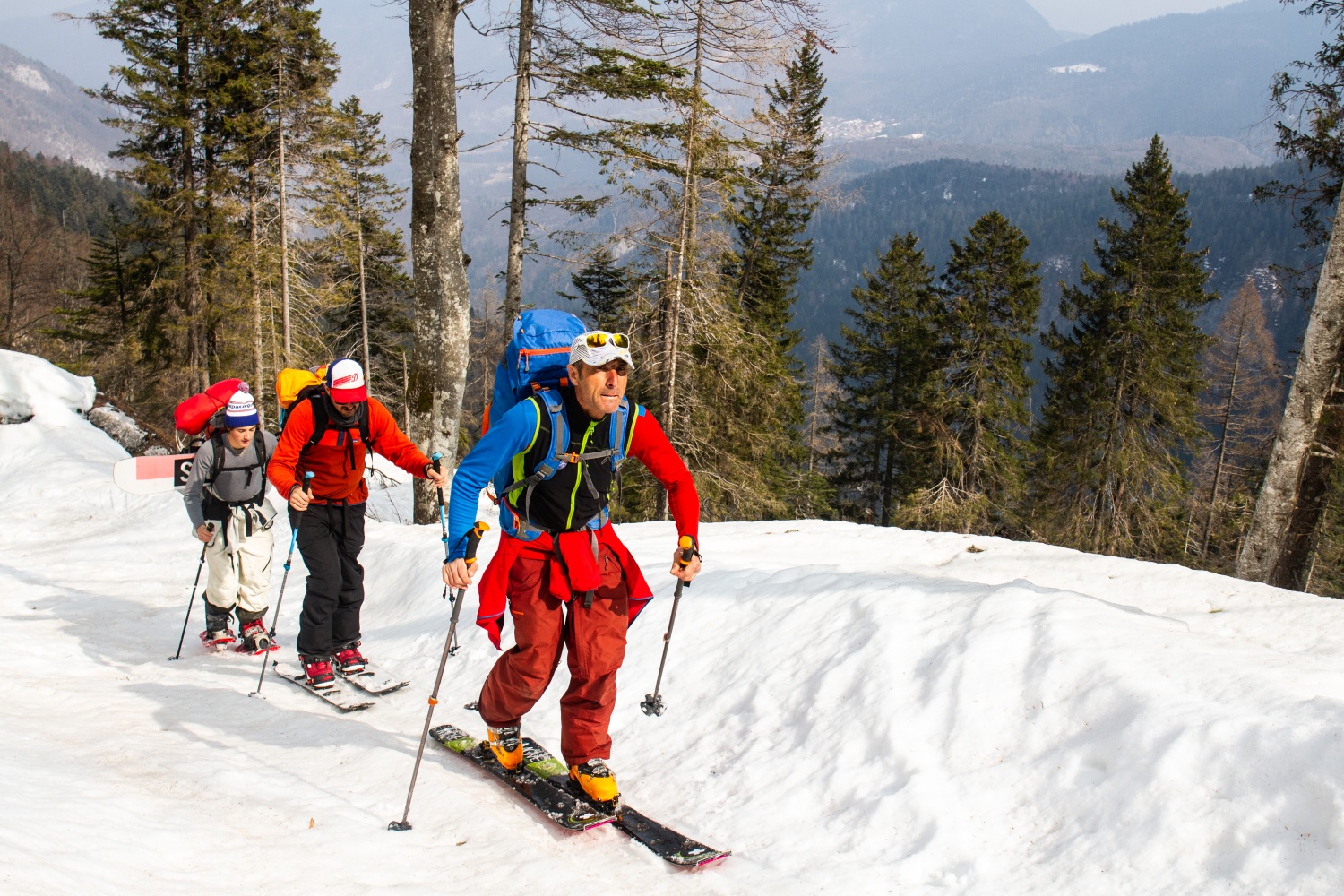
Following the first climbers
It’s partly my fascination with these early pioneers – many of them British – that has informed our choice of itinerary for this trip. Exactly 150 years ago, in 1871, two Englishmen – Douglas Freshfield and Francis Fox Tuckett, accompanied by their French guide Henri Devouassoud – became the first people to climb the highest peak in this range, Cima Brenta.
“Exactly 150 years ago two Englishmen became the first people to climb the highest peak in this range”
Both bewhiskered Victorian gentlemen of a certain social class, Freshfield and Tuckett doubtless held a few colonial-era opinions about the naming and claiming of peaks and passes that we’d find problematic today. But they also shared a deep appreciation for the mountains, and for this lesser-known range in particular. In his 1875 book Italian Alps, Freshfield waxes lyrical about “the fantastic rock ridges and mighty towers of the Brenta”.
Over the course of several trips, he and Tuckett created some of the first sketches of the range, quite literally helping to put the Brenta Dolomites on the map. Yet in the same book, Freshfield lamented that several years after they started exploring it, “the beauties of this region, one of the most fascinating in the Alps, [...] have remained unsought and unsung”.
To a certain extent, this is still true. The Brenta are part of the Dolomites UNESCO World Heritage site (made up of nine distinct ranges) but they’re less well-known than the mountains of Süd-Tirol to the north for example, especially among Brits.
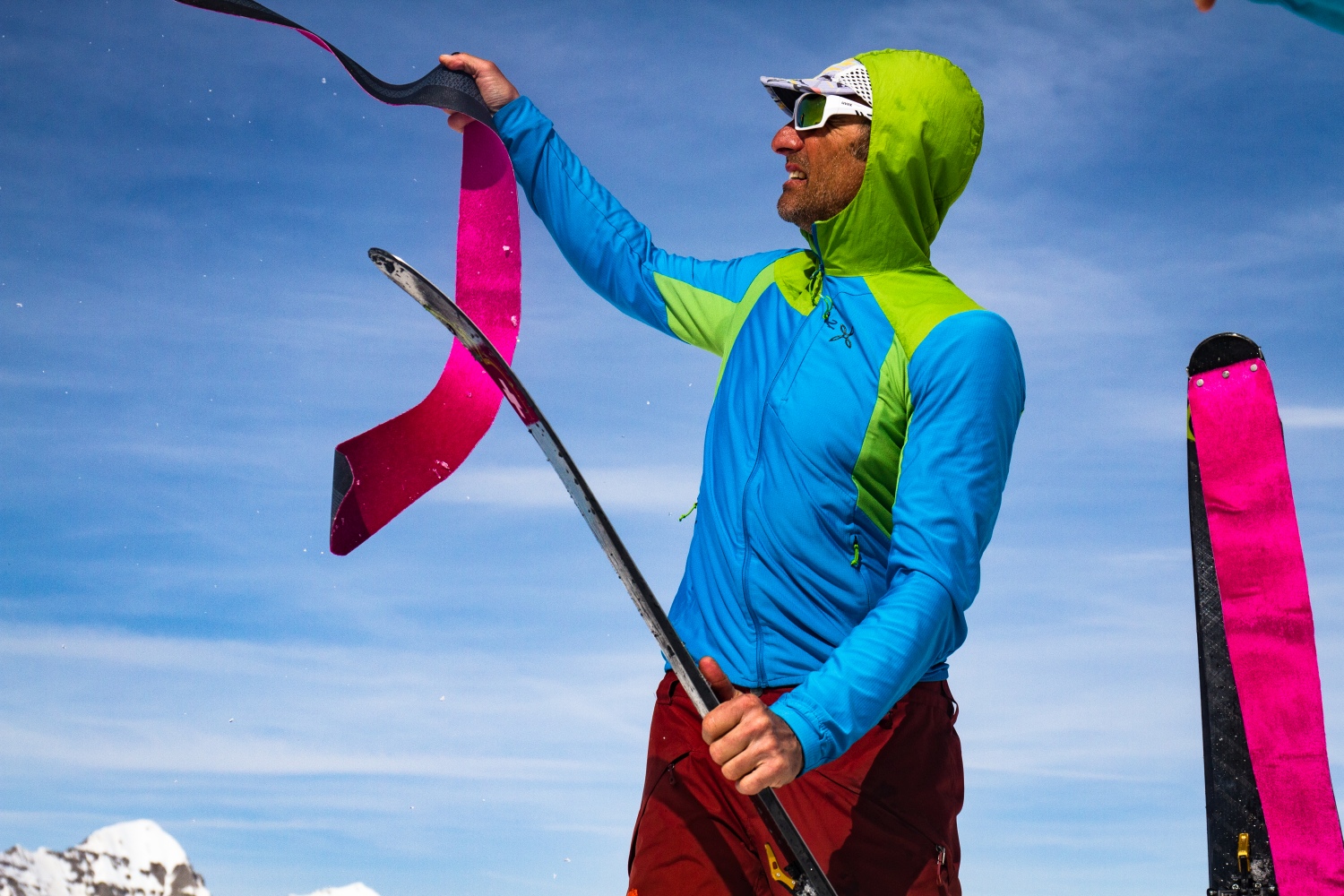
Earlier in the winter, my best friend Andrea Azzolini and I followed one of the routes pioneered by these first Victorian visitors, splitboarding up to the narrow mountain pass beneath Cima Brenta which still bears Tuckett’s name. Unfortunately – much like the pair themselves on their first excursion into this range – we got lost on the way down, and found our path blocked by a sheer cliff.
In his account of their adventures, Freshfield fingered an untrustworthy local ‘guide,’ who led them astray (and then proceeded to eat their lunch) as “the source of all our misfortunes”. Our issue was the modern tech equivalent – we’d lost an iPhone in the snow and with it, our map, leaving ourselves with a sketchy descent, and a long, chastened, walk out.
- READ NEXT: The Best Gear for Backcountry Ski Touring
This time, however, we have a better plan, an excellent guide, and – seemingly – enough provisions to last for weeks. The four of us – Andrea and me, plus Simone and his 20-year-old son Giulio, a talented snowboarder who’s halfway to becoming guide in his own right – are going to post up in a remote cabin at 1,850m, and use it as a base to explore the Brenta range. The snow conditions might not be quite what they were on our earlier foray, but if we really can’t find anything worth riding, says Simone, well hey, that’s what we have the wine for!
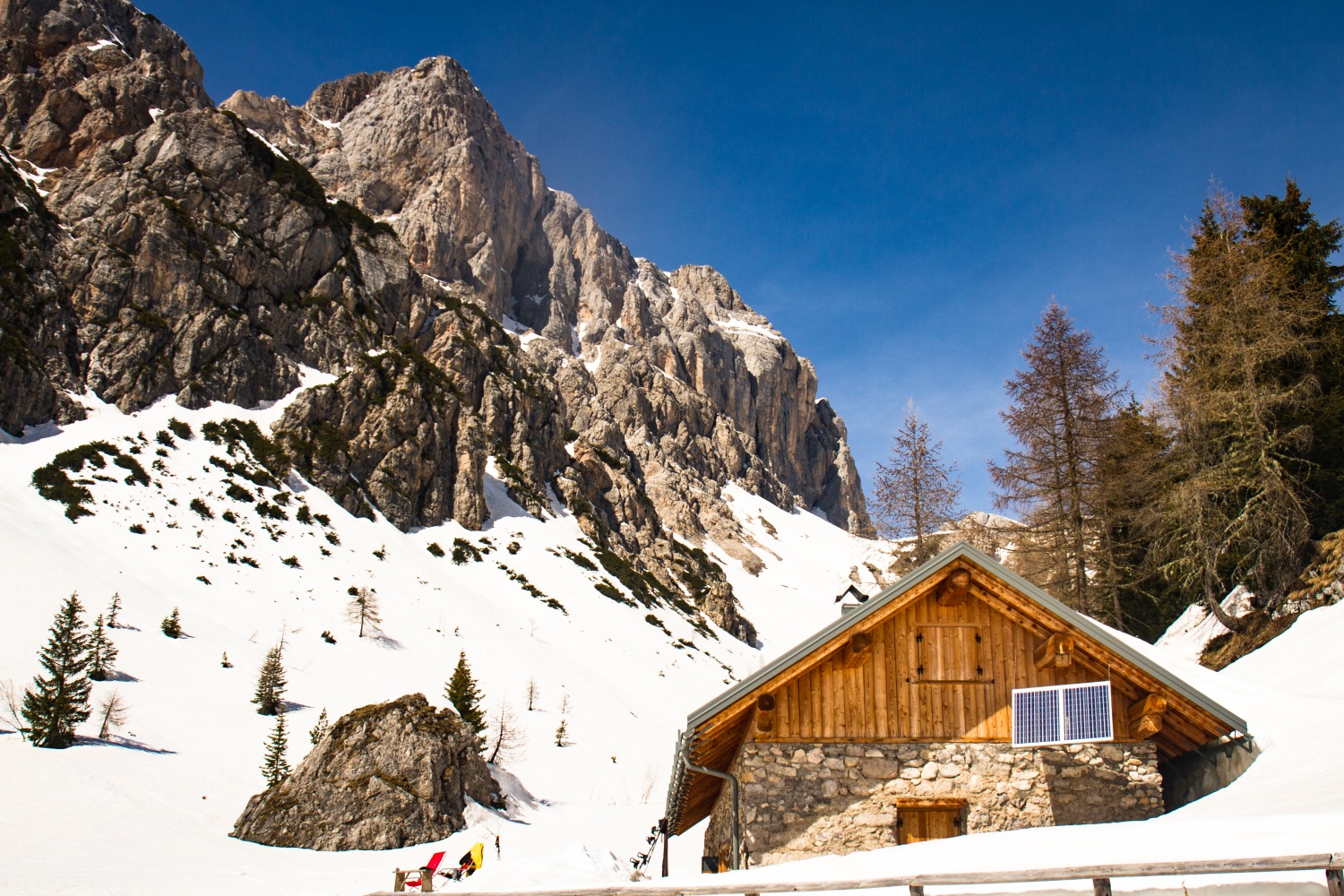
Our home for the next three days is a long, squat hut – a bivacco in Italian – owned by the Hunters’ Club of Cavedago, one of the villages down in the valley. Normally it would off-limits to non-members, but Simone has managed to get his hands on the key. It looks like no-one’s been here for a while. The season’s snowfall has all but buried the front door. But when we manage to carve out steps under the eves and prise it open, the interior is a sight for sore eyes.
Sure, the porcelain toilet doesn’t seem to be plumbed in, and there’s no water coming out of the taps, but that doesn’t matter, because in one corner, taking up almost a quarter of the room, there’s an enormous cast-iron wood-burning stove. This, Simone says, is crucial, not just for the cooking – although that’s obviously important – but because despite the daytime heat, temperatures will still be well below zero at night.
Having settled into our new home, cooked up our first plate of pasta, with a ludicrously simple but tasty tomato sauce, and cracked open a couple of celebratory beers in the sun, we set off for an evening tour up a nearby ridge. The sky is crystal clear, and as the sun sets out of sight to our west, it paints the peaks ever-deeper shades of orange. It’s a stunning start to the weekend, and we ride down the hundred or so slushy metres back to the cabin elated. It’s only then that we realise we have a serious problem.
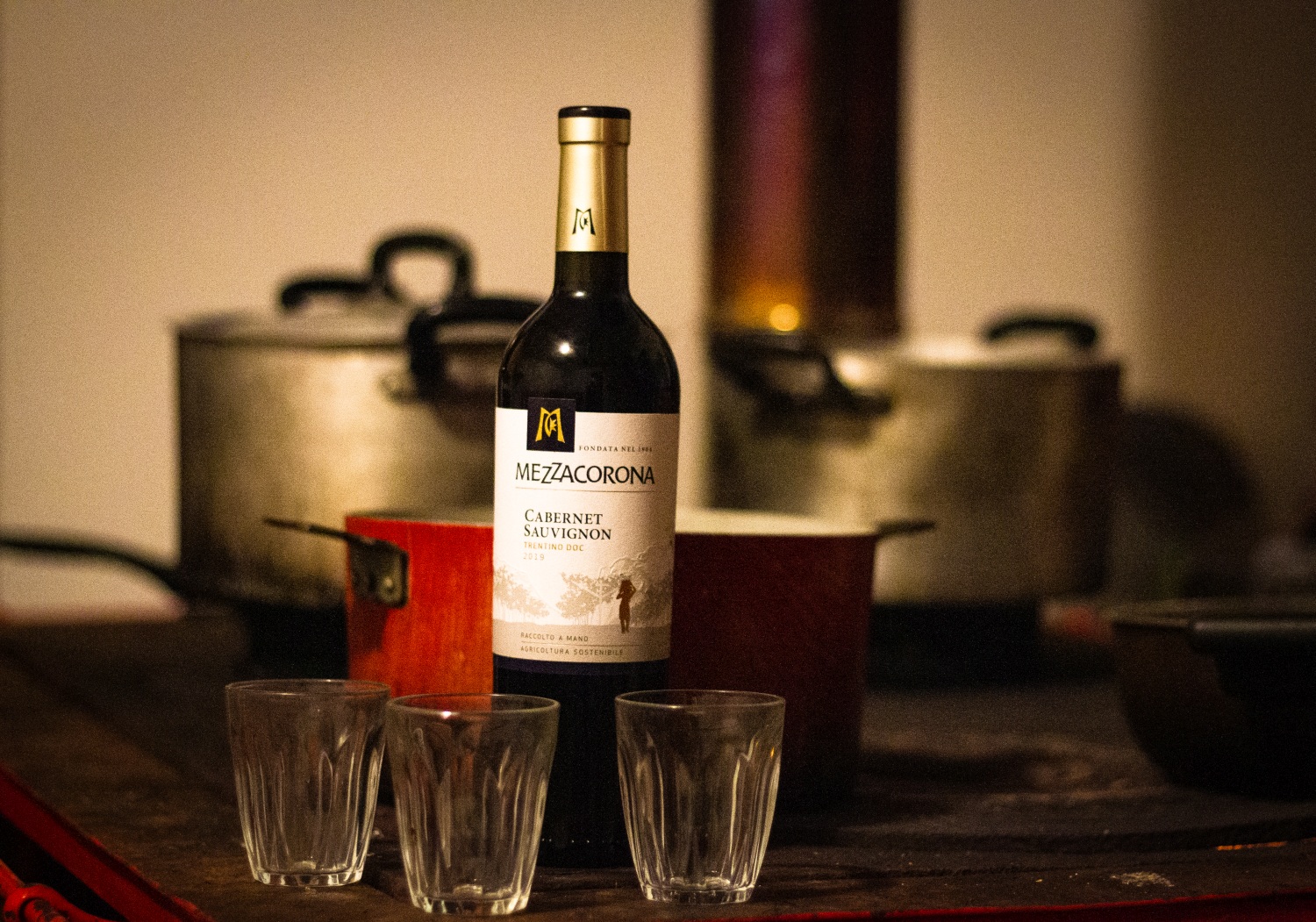
While the hunters of Cavedago have provided more than generously with their stove – complete with a stack of pre-chopped wood – they appear not to have bothered putting beds in the bivacco. Either that, or they’ve locked them away behind the cabin’s one closed door. After a fruitless half-hour of trying to pick the lock, we decide to cut our losses, sink a bottle of wine, and play rock, paper, scissors for the prize of sleeping on the hard wooden table. Needless to say, none of us has a restful night.
“We decide to cut our losses, sink a bottle of wine, and play rock, paper, scissors for the prize of sleeping on the hard wooden table”
The following morning, thick cloud has rolled in, so we dawdle over our breakfast. Giulio melts snow to make tea, Andrea massages his shoulders back to life after his night on a narrow bench, and I debate whether or not to use a spare pair of socks so early in the trip. “Ooof,” says Simone, catching a whiff. “Smell like a bomber!” I don’t need to get the reference – to a cheesy Italian razor ad, it’s explained to me later – to share the sentiment. “Smelling like a bomber”, becomes a running theme for all of us as the trip wears on.
Given that we don’t see another soul all weekend, we’re slightly surprised to hear voices outside as we eat. Simone shouts a greeting out the door, and after a shuffling of skis and a stamping of boots, two lycra-clad ski mountaineers, Mirko and Matteo, poke their heads in, gratefully accepting a cup of steaming coffee.
“Ah yes,” says Mirko, when we mention the mystery of the missing beds. “They probably locked them away deliberately. That’s Cavedago for you. There are three clans of hunters in the village, and they’re constantly arguing with each other. One day they’ll have a wedding, and invite all 500 people in the village along. Then the next day, they’re sending their lawyers round to each others’ houses again.”
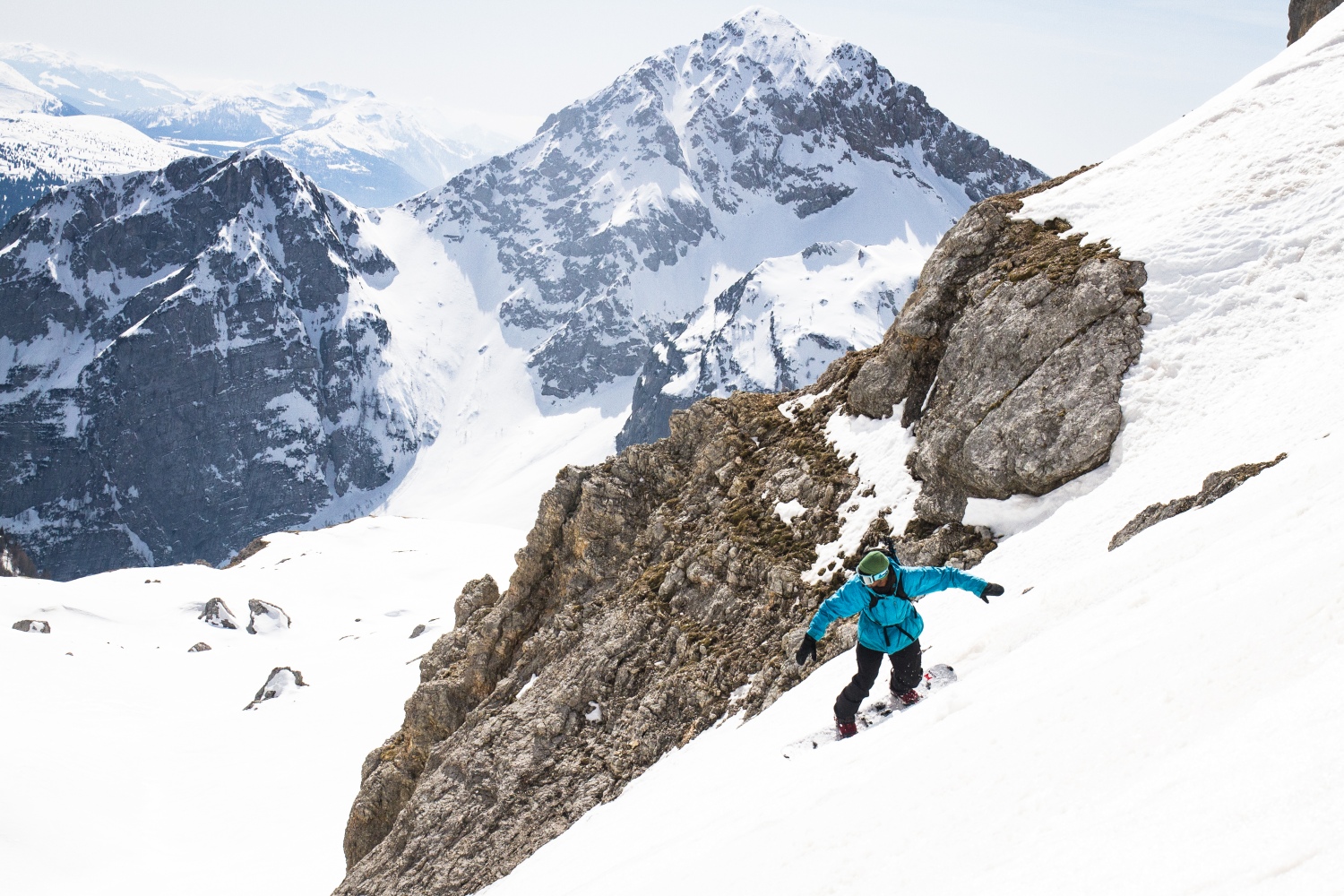
The clouds clear as we finish our coffee, and after watching Mirko and Matteo practically sprint off in one direction on their super-skinny skis, we head off in the other, in search of any fresh we can find. If Simone’s guiding skills are excellent, his grasp of the English pop canon is less so – but that doesn’t stop him loudly singing the classics with his own, made-up lyrics, as we work our way up the skin track. “Slowly, slowly, say you go slowly,” to the tune of The Cardigans’ Lovefool is a particular favourite.
His son Giulio, meanwhile, motors on ahead, despite having heavy snow shoes rather than a splitboard. Once we reach the Passo del Clamer at 2,164m, he quickly finds a hip to hit. The landing isn’t exactly powder, but the slush is soft enough to make it safe to go big, and he tweaks out a couple of massive indy grabs for the camera. Andrea, a supremely stylish rider in his own right, joins in, and the pair of them egg each other on enthusiastically.
Unfortunately the weather is less willing to play ball, and before long the clouds have rolled back in, reducing visibility to just a few feet. Still, the ride down through the untouched spring slush is fun, especially when we drop beneath the treeline, and after another excellent lunch (pasta again, but I’m not complaining) there’s still time to venture out again when the sun pokes through in the afternoon.
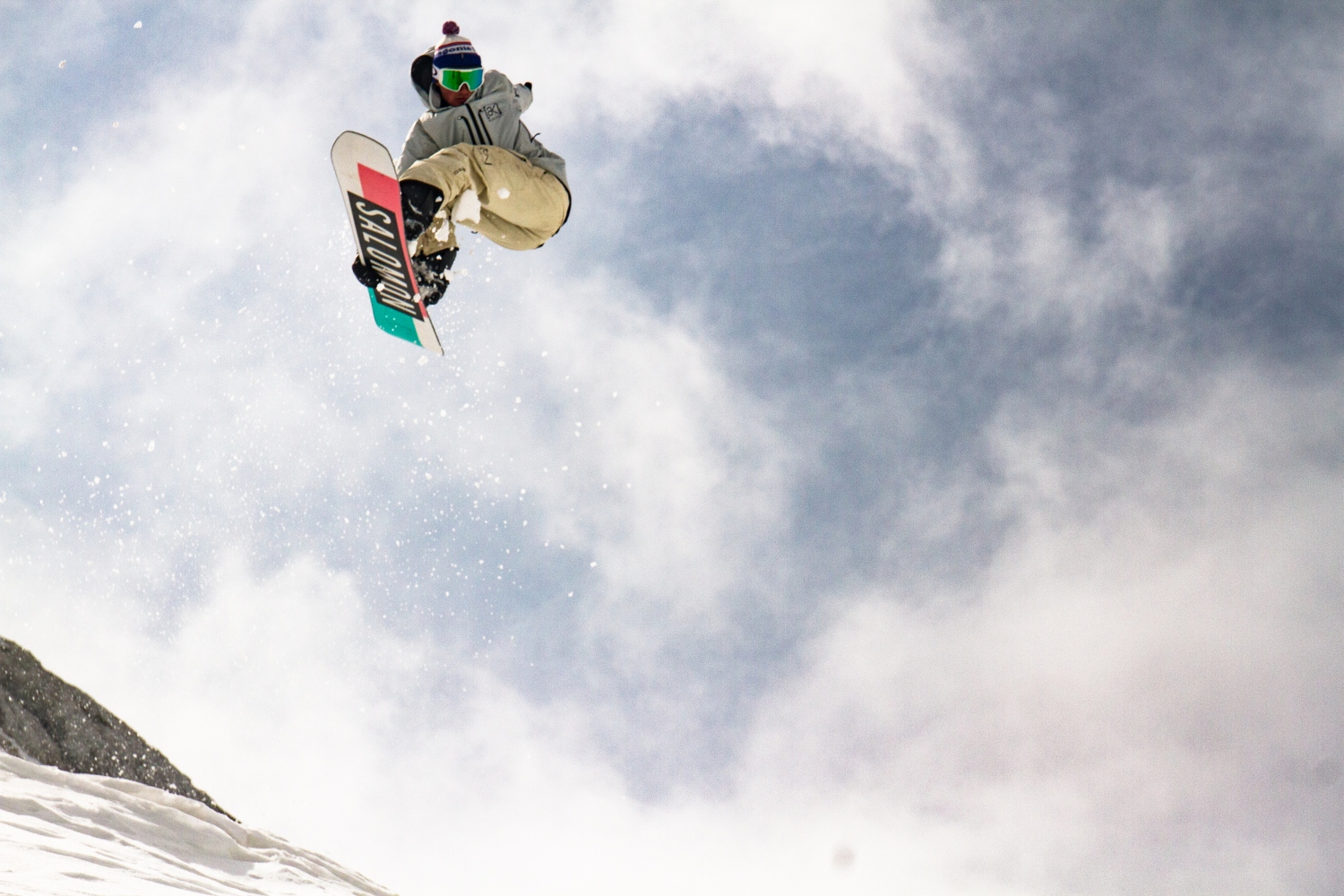
Tough at the top
Our final day dawns bright and clear. While we’re all a little sore from the benches – and smelling like bombers, obviously – we decide to aim a little higher. Our objective is Cima Santa Maria, which at 2,678m is the highest peak in the immediate vicinity. Steeper sections are tough going – the ice formed overnight has yet to melt in the valley – and I find myself grateful that I managed to find space for my splitboard crampons in among the food and wine we brought up the valley.
As we step up onto a ridge, and into the sun, however, the world opens up. From here, the view becomes more jaw-dropping with each metre we climb, and the sight that awaits us when we reach the summit is worth every sweaty step. Spread out in front of us are the “great, red towers”, of the Dolomites that moved Douglas Freshfield to poetry, and led his guide to make comparisons with the British Houses of Parliament.
“Spread out in front of us are the ‘great, red towers,’ of the Dolomites that moved Douglas Freshfield to poetry”
Some way below, we can make out the shape of Madonna di Campiglio’s top lift station. Beyond that, in the distance, we can see “glacier-crowned crags” of the Cima Brenta itself, where Freshfield and Tuckett first stood a century and a half ago. Between us and that enormous hunk of rock, some six kilometres to the south, there’s not a single other person to be seen.
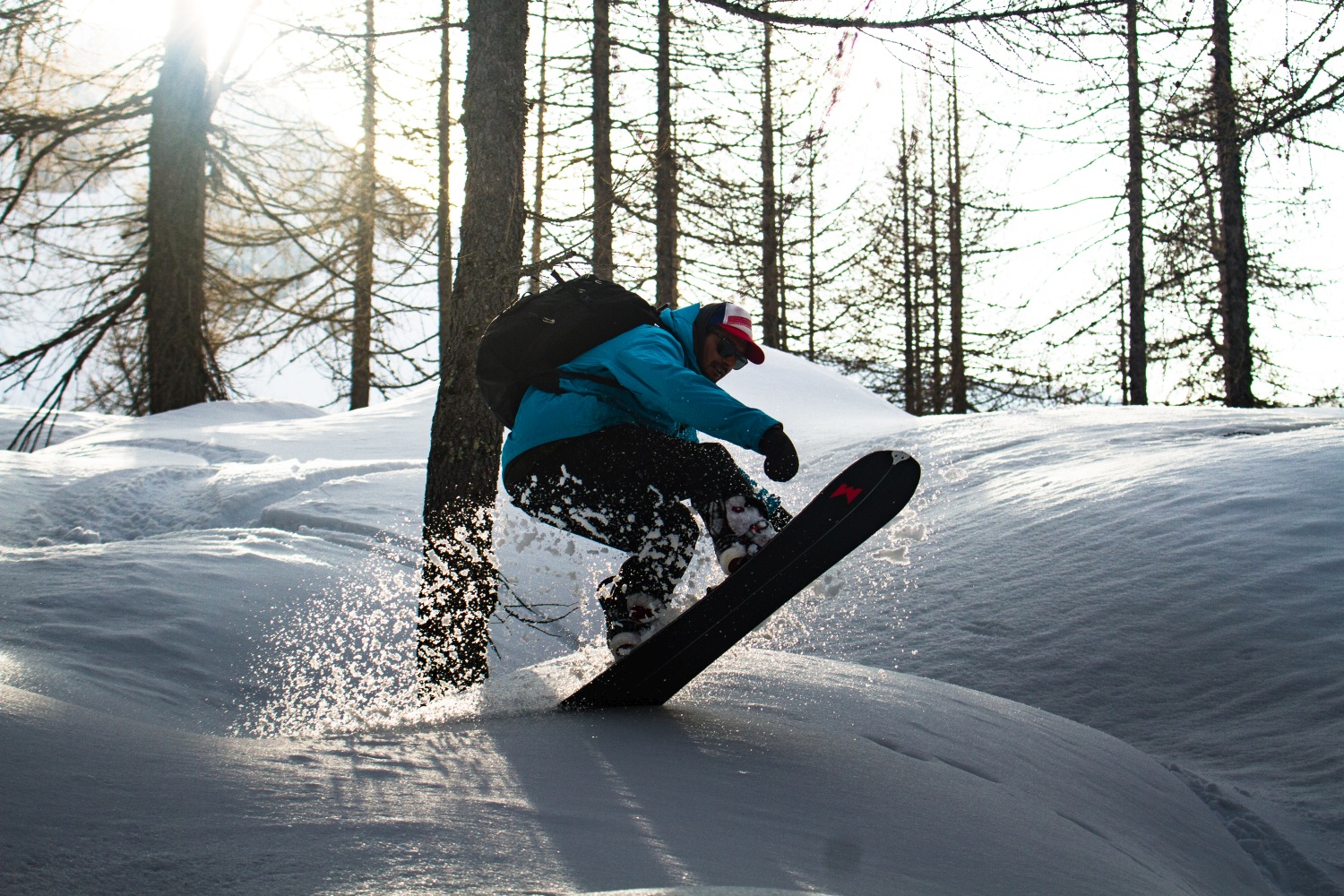
The ride down leads us into a wide couloir, between what Freshfield described as “an array of slender obelisks, beaks and crooked horns – the strangeness of which would, but for a long experience in dolomite vagaries, have made us doubt our eyes”. It’s all I can do to stop myself staring at the rock formations, and concentrate on navigating the lumpy slush beneath my board.
As we reach the bottom of the valley, the terrain and the snow flatten out and I settle into cruise control, ollieing over stumpy trees, tail-tapping rocks, and high fiving Andrea as he rides past. It’s warm, sunny, and I know there’s still half a bottle of wine left for lunch. 2021, the pandemic, and the outside world couldn’t feel further away if they tried.
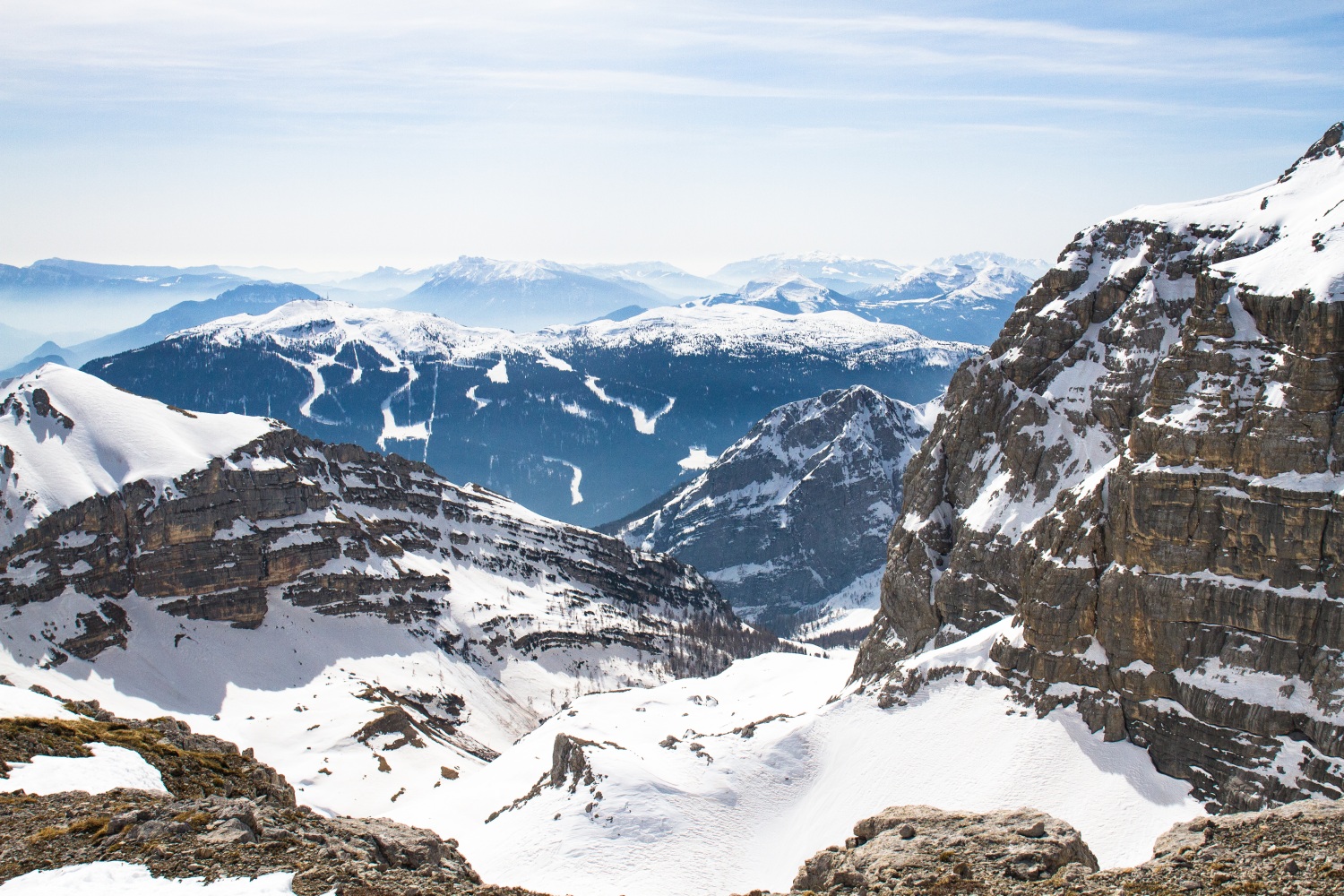
Snowhow
Getting there
Ryanair operates daily flights from London Stansted to Verona, from £25 one way.
Guiding & trip planning
Simone Elmi works for Activity Trentino, a guiding company which can organise all kinds of mountain excursions – from climbing in summer, to multi-day ski-touring trips in winter.
Where to stay
The best access points for the wilder side of the Brenta Dolomites are the villages of Fai della Paganella, Andalo and Molveno, all part of the Dolomiti Paganella ski area. All have multiple accommodation options.
Further info
Tristan’s trip was supported in part by the regional Trentino tourist board. Their website contains a wealth of information on itineraries, hotels and activities in the area.
- READ NEXT: The Best Ski Resorts in Italy


